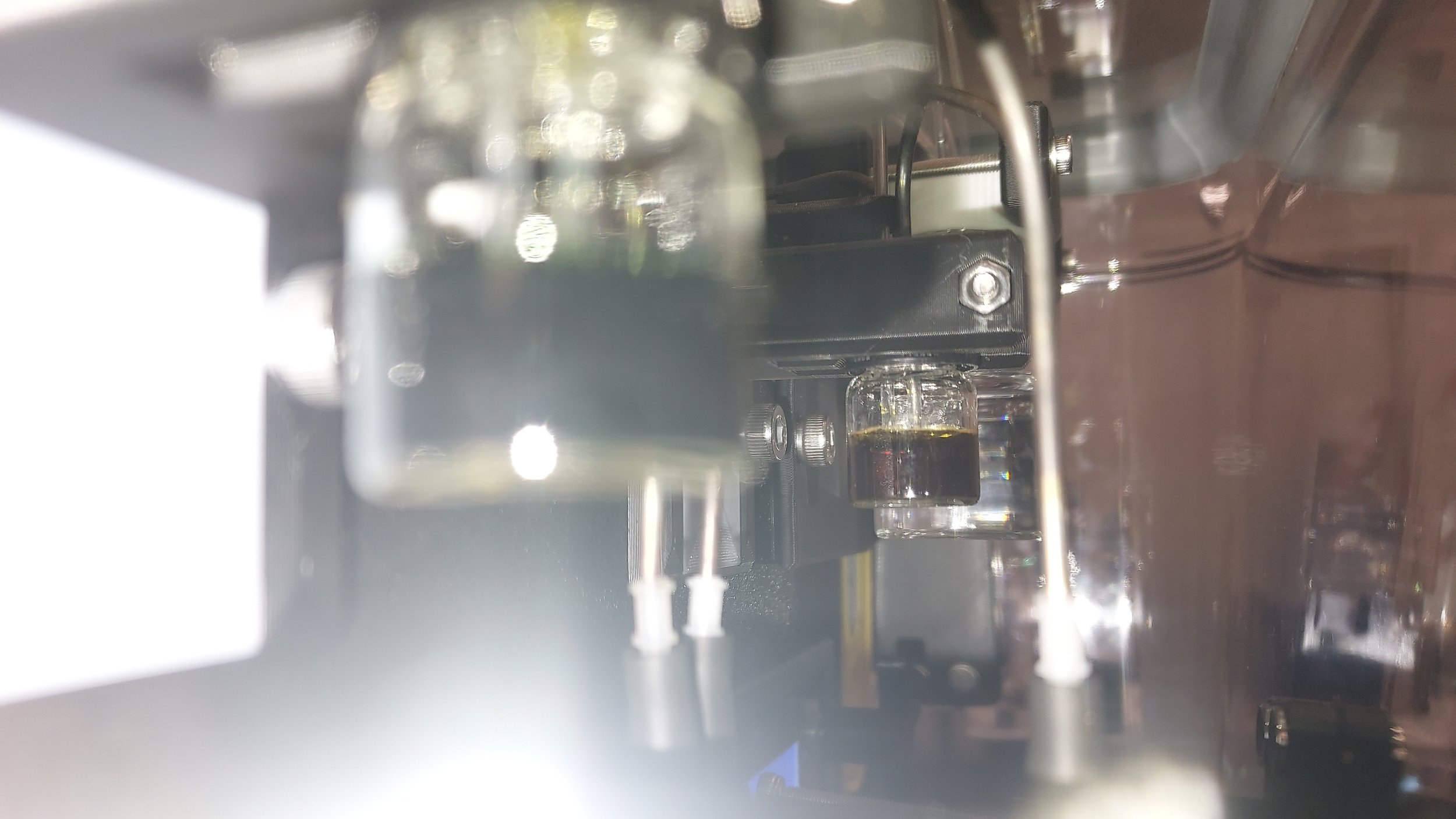
What is the Redoxino™ Test System?
A compact, small-volume, high-throughput test system for flow cell R&D, including flow batteries. It combines multiple testing components into a single integrated setup and enables:
High current density at low current magnitudes (safer, less expensive instrumentation)
Volume as low as 1 mL total (0.5 mL per side) per test: save on costly active materials and membranes/separators
Rapid assembly (<10 min), without luer fittings or a torque wrench and bolts
Compact footprint: 28 x 33 cm (11" x 13") per unit, including the environmental control
Daisy-chained parallel testing with one power source and your choice of potentiostat/controller
It replaces:
Glovebox
Peristaltic pump
Large electrolyte reservoirs
Bolted flow cell test fixture (cell stack)
Custom wiring, numerous power cords, and fittings
Tedious manual setup
Side-by-Side :
Conventional Setup vs. Redoxino™ Test System
Conventional Setup
Total Cost : ~USD$25,000
Glovebox : USD $20,000
Peristaltic Pump + Controller : USD $2,000
Flow Cell Fixture / Stack : USD $2,000
Integration Parts / Housing : USD $1,000
Approx. Test Bench Footprint : 1-2 m²
Assembly Time : >1 hour
Electrolyte Volume : >10 mL per side
Parallelization : Low
Redoxino™ Test System
~USD $300-500 self-sourced / ~USD $3000 full build kit BoM
USD $200+ / Included : Inert Gas Box + Gas Manifold
USD $70-100 / Included : Peristaltic Pump + Controller
USD $25-50 / Included : Flow Cell Fixture / Stack
USD $5-125 / Included : Integration Parts / Housing + Sensors
0.1 m² (28 x 33 cm) : Approx. Test Bench Footprint
<10 minutes : Assembly Time
>0.5 mL per side : Electrolyte Volume
High : Parallelization
FAQs
-
Flow cell testing today is complex, slow, and material-intensive:
Cell cycling and lifetime testing can take days to months or longer
Electrolyte volumes >10 mL in even the smallest test fixtures require gram-scale mass of proprietary material (a major issue at R&D scale)
Test apparati are large, expensive, and often clunky to run in parallel
Critical experiments are challenging to iterate and statistically validate due to these time, material, and space constraints
This slows R&D and directly delays getting new battery technology to market.
-
Researchers, technologists, and lean R&D teams working on:
Flow battery and flow cell cycling, lifetime, and output characteristics
Novel / proprietary electrolyte chemistries, formulations, and their kinetics
Comparative membrane, separator, and materials testing
Especially useful for those in:
Startups & early-stage tech development
Academic labs
“Skunk Works” style R&D teams
Government R&D programs
-
Flow cell and flow battery innovations are a combinatorial problem—you need to test a wide range of materials and conditions to find breakthroughs.
But current tools force you to test one or two test conditions at a time, with long experimental timeframes, and material and cost bottlenecks.
The Redoxino™ Test System makes parallel, fast, resource-efficient testing possible—for controls, iteration, and real science.
This accelerates your technology learning rate—and your path to commercialization.
-
Most rely on:
Legacy flow cell stack architectures: bolts, torque wrenches, too many parts, lots of membrane, patience, and a little luck
External peristaltic pumps: larger and more expensive than they should be
Glove boxes for inert gas environment: bulky, expensive, and time consuming to maintain
DIY setups: appended together with off-the-shelf parts, requiring gloveboxes, peristaltic pumps, and lab-specific custom work
Typical experimental setups take up ~1-2 m² of footprint (bench/glovebox space) per test and cost >$20,000.
-
Many solutions re-use legacy form factors, fixtures, and design features
It’s non-trivial to integrate all components (flow, electrical, chemical, electrochemical, sensors, gas handling) into one low-cost, user-friendly unit
Additive manufacturing (3D printing) has progressed to the point that critical production-quality parts are now possible to manufacture instantaneously for pennies right where you need them, and we leaned into this
We designed the Redoxino™ Test System out of necessity—because nothing existed that met our needs as researchers
Our deep background in chemistry, liquid handling, electrochemistry, instrumentation helped us reimagine what was possible
-
The Redoxino™ Test System helps Li-ion alternatives catch up faster
Enables statistically significant and parallelized testing for faster iteration
Potential to increase R&D throughput by orders of magnitude
Think of it like a PCR machine for flow batteries—turnaround time and scale matter.
-
We are hoping to sell complete build kits for ~$3000 (covers NRE, labor, parts)
We are also continuously updating our open-source design files and build guides so you can fabricate, 3D print, and source parts yourself for a total bill of materials (BoM) of ~$300-500
Our goal: Build a community of developers, researchers, inventors, and builders solving real problems together to accelerate the adoption of flow batteries and non-lithium energy storage technologies
We patented it, but chose to open-source it—because the world needs better tools, faster.


